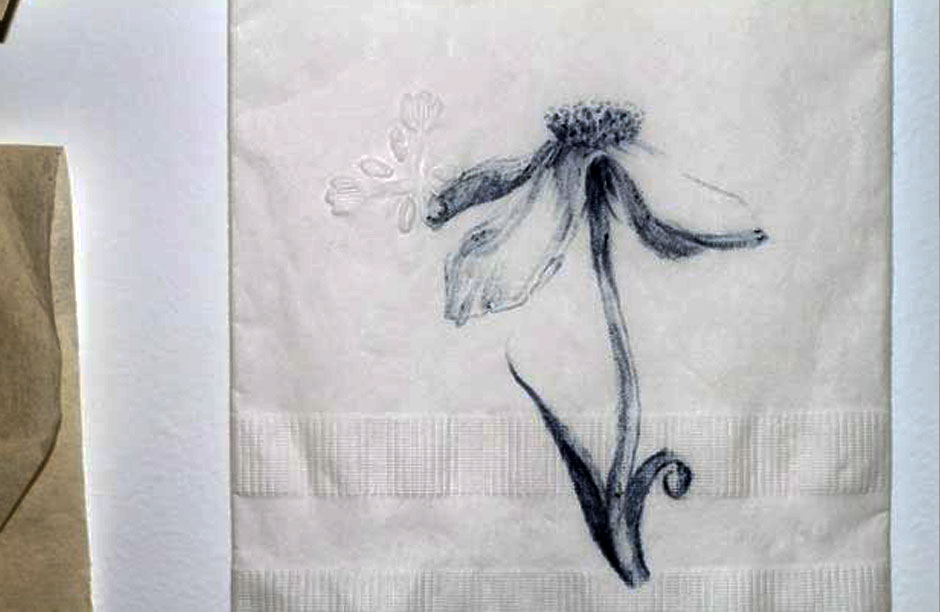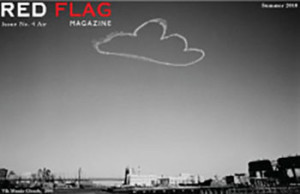Artist: Jim Hodges

Jim Hodges transforms ordinary objects – paper napkins, fabric flowers, silk scarves, mirrors, tissue paper – through subtle interventions that bring home the immediacy of life and the lasting power of transitory moments. In A Diary of Flowers, 1992-93 Hodges pinned to the wall hundreds of used coffee-shop napkins, each carrying sketches of flowers rendered in pencil and ballpoint pen. When seen together, the doodled napkins reveal a disconnected journal of thoughts reflecting variations in moods, reminiscences, and daydreams in the life of an individual (in this case, his own). Although private in their origins, Hodges’s “souvenirs” of memory and emotion invite the viewer to create a new, equally intimate narrative from the cues provided. The intersection between the personal and the collective is of utmost importance to the artist, who also struggles to make his work accessible as well as poetic.
Hodges’s choice of materials stems from a desire to demystify art and communicate with people on a basic human level. Hodges admits that he is often attracted to materials that have “heavy” meanings, like flowers and mirrors. Exploring the many nuances implicit in an object, he then attempts to activate the various layers of signification through his art. Hodges’s use of flowers, for example, grew out of his interest in the devaluation of floral subjects in contemporary art. Associated with craft and sentimentality, the decorative quality of flowers made them inappropriate, empty topics for an art world focused on issues and social dilemmas. Yet Hodges became intrigued by the pervasive use of flowers in contemporary society as potent carriers of human sentiment. Making suitable gifts for virtually any occasion, flowers are commonly given as a sign of love, friendship, joy, and caring to others. As an expression of sorrow, flowers also have the power to transform loss into a poetic yet transitory symbol of life and beauty.
Hodges series “A Diary of Flowers” (1992-1993) is paired with our feature story “Remembering Smell” by Bonnie Blodgett as a mirror to Blodgett’s own poetic and painful experience of remembering her past after losing her sense of smell. As a garden writer flowers played a significant role in Blodgett’s memories and without her sense of smell – like the flowers from “A Diary” sketched by Hodges upon the stained surface of a paper napkin – flowers for Blodgett also became mere objects.
Partially excerpted from an essay by Olga M. Viso in “Regarding Beauty”, 1999, exhibition catalogue, Hirshhorn Museum and Sculpture Garden
